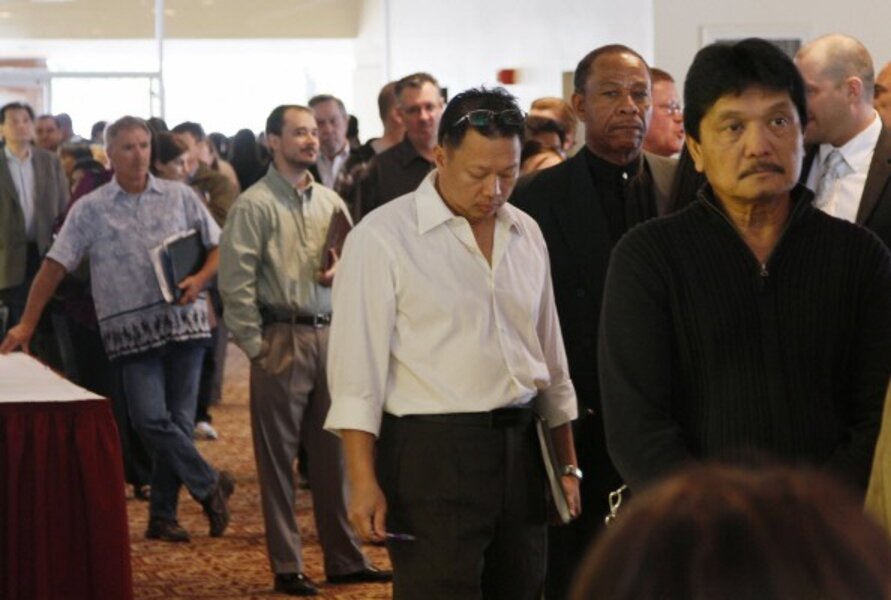Jobs growth in March seen throughout the economy
The US economy added 162,000 jobs in March, signaling what may be a turning point from “jobless recovery” to sustained expansion of jobs.
The job gains were based broadly throughout the economy, including manufacturing, construction, and services as well as temporary Census jobs created in government, the Labor Department reported.
The news doesn’t mean a quick drop in America’s high unemployment rate – which remained stuck at 9.7 percent for the month – but economists see the numbers released Friday as a harbinger of modest revival.
'The best report in three years'
“This is the best [job] report we’ve seen in three years,” says Mark Vitner, an economist at Wells Fargo Securities in Charlotte, N.C. “It’s not getting better as fast as we’d like it to, but it’s not as dire as it used to be.”
He notes that some of the March job gains reflect seasonal or temporary factors, such as a bounceback in the construction trades after some unusual weather problems during the winter. And government stimulus programs continue to provide much of the fuel for private-sector demand.
Still, after two bleak years for the job market, it suddenly looks a lot more like economic springtime.
In all, the economy posted net job gains of 15,000 in construction, 17,000 in manufacturing, 11,000 in professional and business services, and 45,000 in healthcare and education, among other categories. The job gains also included jumps in the retail sector, a continuing strong rise in temporary-help positions, and a Census-driven gain of 39,000 jobs in government.
What next?
Mr. Vitner expects more job gains in the next few months, but then some slowdown in the jobs recovery as things like Census hiring and home-buyer tax credits fade out.
Obama: sustained job growth will take time
President Obama hinted at a similar outlook in a public appearance in Charlotte on Friday. He said it will take time to build the sustained job momentum the US needs.
The good news is, it no longer looks like a jobless recovery – and many economists are now hopeful that the coming months will see stronger job gains than those seen for two tepid years after the recession of 2001. The March job report means that 2010 opens with the first full quarter of job growth since the recession began. (Small job gains in November were swamped by losses in surrounding months during last year’s fourth quarter.)
Already, one leading indicator of employment has turned up more sharply than at any time following the 2001 recession. The Conference Board, a research group in New York, compiles a monthly “employment trends index,” which has been rising since late last year.
“The past two jobless recoveries in 1991 and 2002 were a result of a continuous decline in manufacturing employment,” Gad Levanon of the Conference Board said in a March 8 report. “This time, the strong recovery in manufacturing production has already led to two consecutive monthly increases in manufacturing employment. We are likely to see this trend continue over the next several months, which will contribute to overall job growth.”
March was the first month in more than two years that the economy added 100,000 jobs or more. That’s a significant level, not just because of its six digits but also because anything less won’t keep up with the arrival of new workers entering the labor force.
The level of labor-market distress remains high. Some 15 million are unemployed, of which 6.5 million have been jobless for more than half a year. Many others want full-time work but are working part time or have become discouraged and dropped out of the labor force.
“We are beginning to turn the corner,” Mr. Obama told workers in Charlotte. But he said the nation is still going through hard times.





